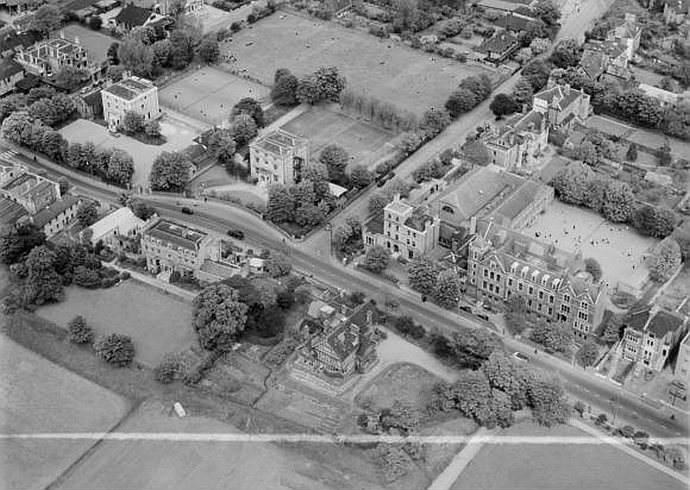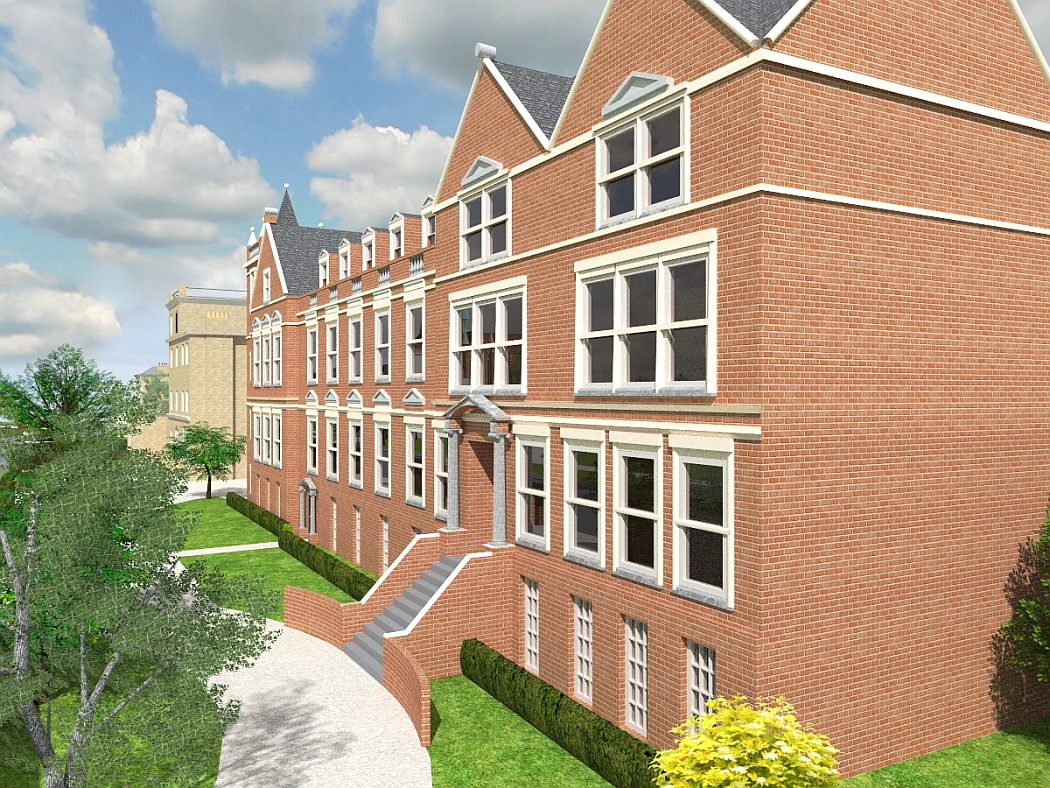 Croydon High School for Girls
Croydon High School for Girls
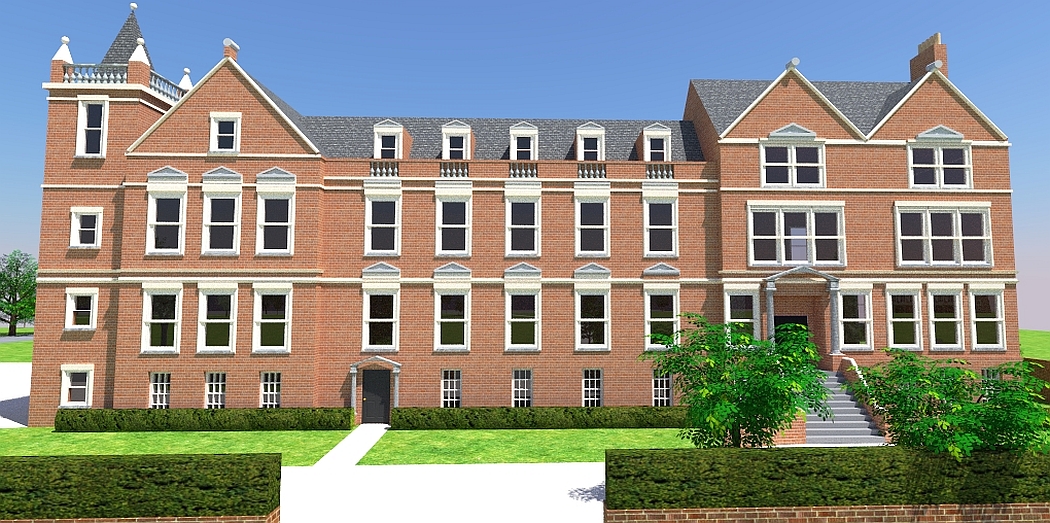 Croydon High School for Girls
Croydon High School for Girls
Very few photos
This impressive building was erected in 1880 and it was knocked down around 1966. In its long history it hardly seems to have been photographed. Perhaps there are dozens of photos of it lying around in dusty drawers but I could only find two close distance photos on the Internet.
The following photo was taken in the 1960s on a gloomy wet winter day. The bricks look much darker in the photograph than they probably were in reality.
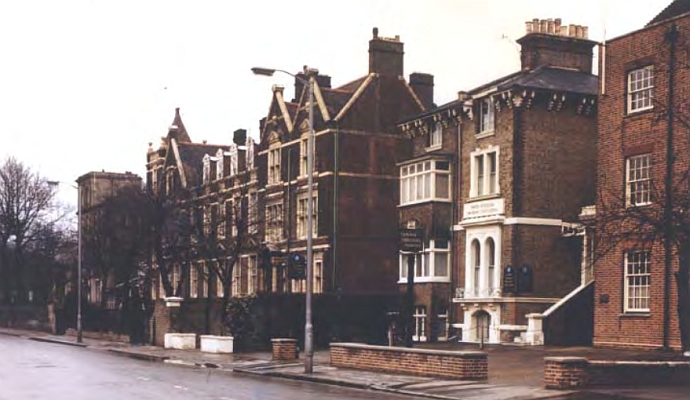 Croydon High School for Girls 1960s
Croydon High School for Girls 1960s
This earlier photo below from the same angle shows that the school was previously much further from the road before Wellesley Road was widened in the 1950s.
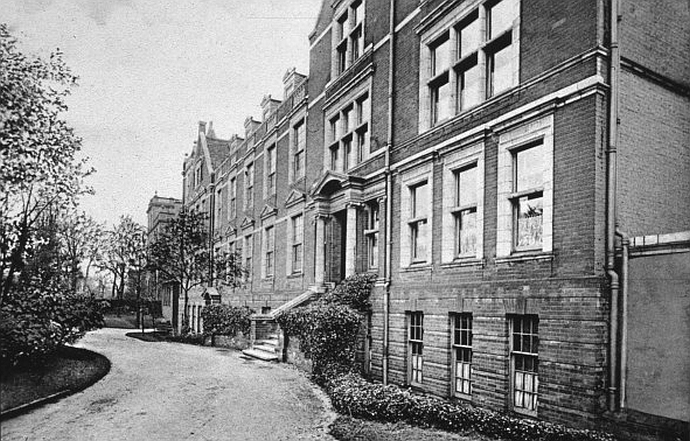 Croydon High School for Girls
Croydon High School for Girls
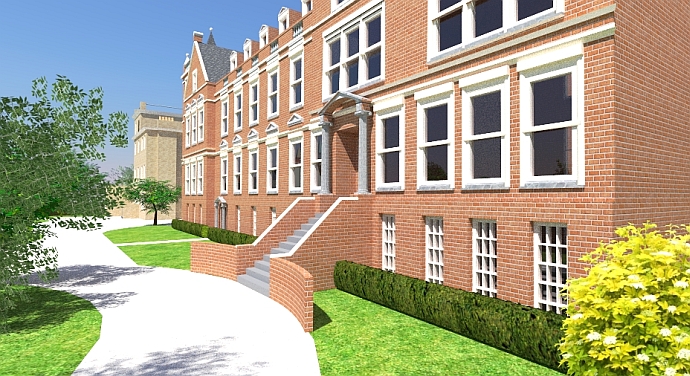 Croydon High School for Girls same view
Croydon High School for Girls same view
The bricks in the above picture might seem too light coloured but air pollution used to darken bricks considerably. If the bricks in the photo had been cleaned I don't think they would have ended up that much darker than they are shown in my model. The grey bricked building in the background is St Leonard Lodge. It was a school before the high school was built. I imagine the new school put it out of business. The 1871 census shows that the school at St Leonard Lodge was run by Charlotte Hughes and three of her sisters. There were eleven boarders plus a governess and three servants. In 1901 it became part of the high school and this photo shows that the school was extended at the back. The three school buildings also seem to be linked on the ground floor.
The Tudor looking building in the foreground directly opposite the school was only constructed in 1902. I have not included it in my model. It was built for the headmaster of Whitgift School. The two detached houses to the left of the High School - The Homestead and The Elms - were also taken over by the High School. Wellesley House can also be seen in the foreground next to the headmaster's house. All of the buildings on the right in this picture became part of Croydon High School for Girls.
Dorinda Neligan, the first headmistress of the high school, lived somewhere in the main school building with her sister and three domestic servants.
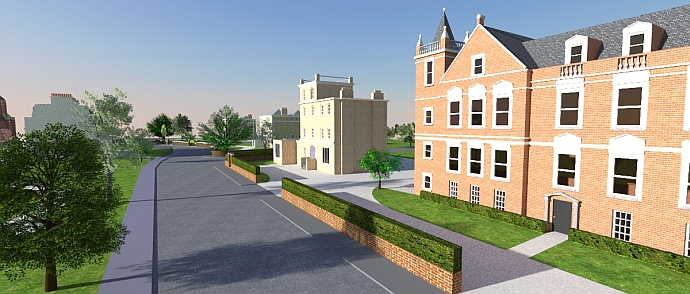 Croydon High School for Girls looking south
Croydon High School for Girls looking south
I have only seen distant photos of St Leonard Lodge but it must have looked very like the house in the following picture.
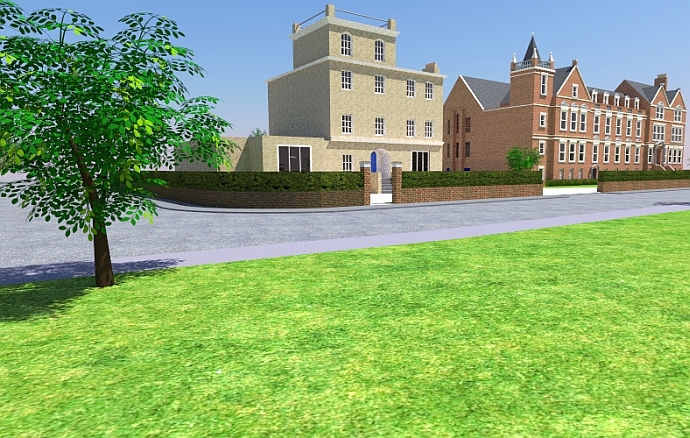 Croydon High School for Girls looking north
Croydon High School for Girls looking north
This rear view show the school before it was extended. It is based on aerial views and a postcard which I have shown elsewhere on the site.
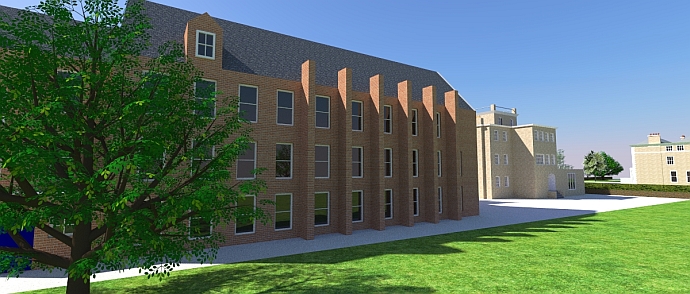 Rear of Croydon High School for Girls looking north c1900
Rear of Croydon High School for Girls looking north c1900
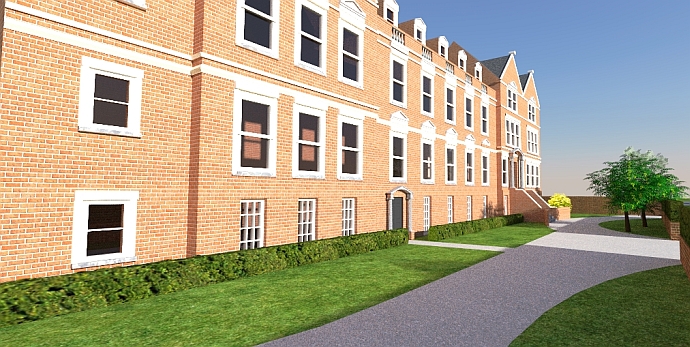 Front of Croydon High School for Girls looking south
Front of Croydon High School for Girls looking south
The Girls's Day School Trust
Croydon High School for Girls is one of 29 schools in the Girls's Day School Trust (GDST), an organisation which in 2014 had over 3700 staff and an income of £274m.
The origins of the trust can be pinpointed to the publication in 1850 of "Thoughts on Self-Culture Addressed to Women" by two sisters, Emily and Maria Shirreff, who in 1872 were among the founders of Girls' Public Day School Company, which was an earlier name for the GDST. I doubt if the book is read much today, but I had a quick look at it.
The book's main idea is that education would allow women to become independent :
The health of a moral being is in self-dependence. In the strong will and power of endurance which enables him to adapt himself to his position, whatever it may be. This would sound like a truism when speaking of men, so universally is it acknowledged; how then can it cease to be true, when applied to woman, unless it be denied that she is a moral being.
Without education a woman's lot is not a happy one :
...the lottery of marriage with its joys and its cares or single life, with its quiet neglect; such is the round of their existence.
They are dominated by men :
In our own day, if we consider woman's external position only, it is still one of entire subjection. To judge from the rights conceded to her by law in our own country, she seems scarcely worthy to attract the attention of the legislator. In estimating public opinions, her opinions are passed over in silence; in questions that most nearly concern herself, her claims are unheard in the national councils; whenever her interests class with those of men, they must at once give way : in everything she is subordinate and powerless.
Miss Dorinda Neligan (1833- 1914)
Miss Dorinda Neligan was headmistress of Croydon High School for Girls from 1874 to 1901. Like the Shirreff sisters she had strong views about women's rights. She was involved in the suffragette protests and had arrested for resisting the police. She also refused to pay taxes and fines. This was after she had retired as headmistress.
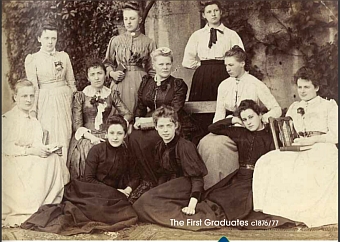 Miss Dorinda Neligan seated center with the first graduates of Croydon High School for Girls c1876/77
Miss Dorinda Neligan seated center with the first graduates of Croydon High School for Girls c1876/77
Three former students
The three old ladies in the 1954 photo below almost outlived the school. They were all born before the school was opened and the school was knocked down not long after the last sister died. One would normally expect a building, especially an impressive structure like this school, to outlive flesh and blood. If buildings are looked after they will last hundreds of years. I have lived in a labourer's cottage which was built long before the school was built and it is still standing. I'm sure the current owner would be astonished if it was suggested that the cottage would be knocked down in his lifetime. There is no reason why it should last at least for another couple of hundred years. Yet the lifespan of buildings in city centres is getting shorter and shorter. Our buildings are like our politicians - here today and gone tomorrow. Everything seems temporary. Nothing lasts.
The two Price sisters lived in Sydenham Road which is next to the school. I am sure that looking at the school as they walked past must have brought back happy memories from their schooldays. The building is just brick and mortar but it meant something to them. Just as it meant something to many other people in the town. When you knock a building like that down then what is lost is not just a building. Memories, feelings of belonging and familiar sights are also affected. The new buildings are looked at with disdain and feelings of regret.
Some would say things can't stay the same for ever. You must have change. But the great public schools and many other elite institutions remain unchanged for hundreds of years. It seems that it is only the little people who have to put up with constant change.
Gertrude Price, who joined the school on its opening day, died in 1962 aged 96 and Aimee Price died in 1956 aged 84.
 Price sisters 1954 Getty Images
Price sisters 1954 Getty Images

